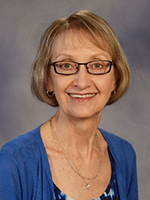

Adobe Photoshop in Motion for New Innovative Visual Projects |
Explore and create : Creation lab
Linda Dickeson
Photoshop users at any experience level will learn how animated GIF projects promote creativity. Motion projects use planning, organizing and problem-solving skills to create amazing visual projects. Learn the incredible Puppet Warp feature and layer masks for animations and cinemagraphs (living photos). GIF files are easily published (shared online).
| Audience: | Curriculum/district specialists, Teachers, Technology coordinators/facilitators |
| Skill level: | Beginner |
| Attendee devices: | Devices required |
| Attendee device specification: | Laptop: Mac, PC |
| Participant accounts, software and other materials: | Attendees will need Adobe Photoshop (CS6 or any Creative Cloud version). Having a mouse to use with the laptop would be helpful. |
| Topic: | Creativity & curation tools |
| Grade level: | 6-12 |
| Subject area: | Career and technical education, Performing/visual arts |
| ISTE Standards: | For Educators: Facilitator
Innovative Designer
|
The purpose of the session is to promote creativity and motivate new ways of thinking about digital image projects by adding motion. Creating motion projects helps students build planning, sequencing, and organizing skills, and the resulting GIF file format allows the projects to be easily published and shared online. As a result of attending the workshop, participants will be able to
-demonstrate effective management of layers in a Photoshop project.
-create “movement” of a still object using the Puppet Warp tool.
-arrange frames and plan timings for the animation.
-export to an animated GIF format.
-preview animated GIFs in a browser window.
-use layer mask concepts with video clips to create cinemagraphs.
-access the workshop web page for review, downloadable files, and additional resources.
-replicate these activities in the classroom with students.
Using hands-on instructor-led activities with sample files provided, participants will learn to create animated GIFs and cinemagraphs; and share the results with the group using the following outline:
1. Session introduction, including how the workshop will be conducted, what will be learned, and “get to know attendees” activities. (10 min)
2. Intro to Photoshop workspace—including navigation & panels (5 min)
3. Introduction to layers using a sample file (10 min)
4. With a new file, move regions of a still image using puppet warp while duplicating layers for the frame animation (10 min)
5. Preview the frame animation and assign loops and timing (5 min)
6. Export to GIF format and preview in a browser (5 min)
7. Convert a short video clip into a GIF animation (10 min)
8. See samples of cinemagraphs online (5 min)
9. Use a short video clip to create a cinemagraph (10 min)
10. Participants (independently or with a partner) create a cinemagraph using the video clip of their choice (10)
11. Closure and sharing (10 min)
Robinson, Ken, and Aronica, Lou. Creative Schools: The Grassroots Revolution That’s Transforming Education. Viking, April 21, 2015. Print.
Adobe. “Adobe State of Create: 2016.” Adobe State of Create: 2016, 3 Oct. 2016, www.adobe.com/content/dam/acom/en/max/pdfs/AdobeStateofCreate_2016_Report_Final.pdf.
Phillips, Cheryl. “Exploring History through Animation.” Creative Educator, 2013, www.thecreativeeducator.com/2013/connections/exploring-history-through-animation.
